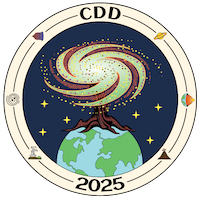Orateur
Description
This study presents a numerical sandbox experiment in which earthquakes occur. The experiment models a strike-slip fault by enforcing translation motions to the bottom and lateral boundaries of a virtual, rectangular box. The approach used is the Discrete Element Method (DEM), where rock is modelled as a set of spherical, rigid particles interacting with one another.
The geometry of the fault is not prescribed but emerges spontaneously when the applied boundary conditions shear the initially homogeneous, intact material. As shearing continues, oblique, Riedel shears form and progressively coalesce, until they give birth to a more mature through-going fault. This fault retains geometric complexity, with traces of the earlier Riedel structures still apparent.
Throughout the fault's development, different regions of the fault zone alternate between periods of locking and slipping, which we can identify as interseismic, coseismic or aseismic (creeping) phases. Slipping patches can be delimited in order to define seismic events, of which we can measure the rupture surface, the amount of slip and the moment magnitude, and whose geometry can be visualized in 3D. The frequency-magnitude distribution of these events reproduces the well-known Gutenberg-Richter law.
This model is therefore capable of capturing multiple timescales, from short-term events (earthquakes), through seismic cycle, to the long-term evolution of seismicity. As such, is provides novel insights into the past, present and future dynamics of strike-slip faults.
| Speaker information | PhD 2nd year |
|---|

